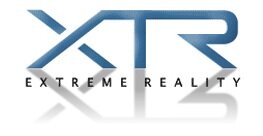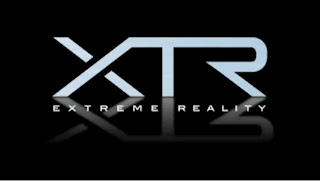XTR3D To Unveil "iZi"-- Touch Free Gesture Control for PC Laptops at GDC

XTR3D To Demo Touch-Free Gesture Control App "iZi" for Laptops at the Game Developers Conference (GDC) March 2-4, 2011
San Francisco, CA — Extreme Reality (‘XTR3D’) Ltd., provider of touch-free Gesture Control and Motion Capture Interfaces, will demonstrate at GDC, its new touch-free gesture control interface for laptops, “iZi” (pronounced ‘easy’). XTR3D’s iZi allows gamers to easily control PC games and applications using body gestures and/or movement.
iZi utilizes a laptop's built-in camera to capture the body movement of a single and or multiple users. Gestures are then associated with system events to control a game or other application. The iZi demo at GDC will feature pre-installed games from XTR3D’s growing number of game partners and will also be customizable for additional games and software applications.
“XTR3D's application development tools, such as iZi, satisfy three different types of audiences," says XTR3D CEO Dor Givon; “the laptop vendors transform their machines into gesture-controlled computers using iZi Pro for laptops, while the application developers utilize iZi Pro’s technology to implement gesture control to any application or game command they offer. Inevitably, the End users benefit the most, enjoying a compelling gesture-controlled experience on their laptop. XTR3D's suite of motion-capture gesture-control software reinvents the way users interact with CE devices and in-home entertainment."

The introduction of XTR3D's iZi app serves as a steppingstone to execute the company’s strategic penetration into the laptop market with an emphasis on touch-free device control. XTR3D will be meeting with game and application developers interested in implementing gesture control capabilities to their offering.
iZi will be demonstrated at GDC in meeting room BMR 346. For more information on iZi, please visit: www.izipc.com.
ABOUT Extreme Reality (XTR3D) Ltd.
Extreme Reality Ltd ("XTR3D") is a privately held company established in 2005. The company develops motion-capture gesture-control software that enables developers and mobile, TV and laptop vendors to add gesture control to an application, game and/or a device command. XTR3D enables simple touch-free gesture control of consumer electronic devices. iZi software runs on any laptop given a regular 2D camera is connected to the device. For more information, regarding iZi and other XTR3D products and services, please visit http://xtr3d.com.
###
XTR3D Introduces First Implementation of Gesture Control Interface--part of Texas Instruments “Me-D™ experiences”

“The release of XTR3D's Gesture Control Interface Engine for mobile devices will serve as a stepping stone to execute its strategic penetration into the mobile market with an emphasis on touch-free device control,” says XTR3D CEO Dor Givon. “This market play by XTR3D will be supported by a complete application framework to attract subscribers / mobile users into swift adoption.”
FOR IMMEDIATE RELEASE
TI’s OMAP™ platform spurs Me-D™ experiences: Welcome to the next mobile dimension
The world isn’t flat, and mobile technologies don’t have to be either, thanks to TI’s OMAP platform
BARCELONA (Feb. 14, 2011) – Texas Instruments Incorporated (TI) (NYSE: TXN) today unleashed new dimensions of the mobile world, labeled “Me-D™ experiences,” which are uniquely enabled by TI’s OMAP™ platform. What exactly are Me-D experiences? They are TI’s trend-setting interactions in which consumers are no longer limited to the physical confines of a mobile device, but rather set free by the ability to make any physical environment the center of the mobile universe. The world isn’t flat, after all, so mobile technologies shouldn’t be either. TI’s OMAP 4 platform, shipping today, steps ahead of the market to deliver unparalleled Me-D experiences, including: touchless gesturing in the “natural” dimension, stereoscopic 3D (S3D) in the “third” dimension, and interactive projection in the “projected” dimension. Mobile World Congress attendees can experience related demonstrations at TI’s booth (Hall 8, 8A84), Feb. 14 to 17 in Barcelona. Full details of TI’s show activities are available at www.ti.com/mwc2011.
“At TI, we embody a pace-setter approach, thinking far ahead about how to turn future-looking features into real-life experiences for end users around the world,” said Avner Goren, general manager of strategic marketing, OMAP platform business unit, TI. “Our Me-D experiences represent an inflection point in this approach, as we drive new mobile opportunities for customers to take advantage of – from S3D and interactive projection to natural gestures. Together with complementary solutions from TI’s partners, our OMAP platform now offers a complete package to make mobile interactions truly personalized and intuitive. This is about creating technological demand, in advance of the demand itself coming to market. This is the future.”
The natural dimension: Gesturing
Everyday conversations not only include speech, but natural gestures. TI’s OMAP platform brings these common, intuitive gestures to the mobile environment as a new means to interact with devices. Utilizing technology from TI’s partner Extreme Reality (XTR3D), TI is demonstrating and offering a touchless gesturing engine which uses a single, simple low-resolution and low-power camera geared for mobile devices. The solution comes with a complete application framework supported by a full set of tools, which enables application developers and OEMs to easily access the gesturing library, and connect gesture features to existing and future applications. The solution will be available in the second quarter of 2011. The gesturing engine leverages unique OMAP 4 processor hardware resources, including imaging and vision hardware accelerators and libraries, a programmable DSP and an embedded programmable CPU. This allows TI and XTR to offer low-power gesturing running concurrently with any application – an unequaled enabler of this natural dimension. Everyday life also includes hand writing, notes taking and drawing. TI’s OMAP platform, coupled with EPOS technology, allows users to take notes and draw in the most natural way – using a pen or stylus. The writing tool is equipped with EPOS patented ultrasonic transmitter, and the OMAP processor picks the transmitted signals using three microphones to accurately determine the pen or stylus location. This allows users to take notes either on the screen, or off screen – next to the mobile device, with or without paper or ink.
The third dimension: Stereoscopic-3D (S3D)
Glasses are not a requirement for 3D vision in the real-world, nor are they needed to lift mobile experiences to the third dimension. TI now provides a feature-complete software package for the OMAP 4 platform, available today, which enables S3D, HD video and image capture, processing and rendering. TI will also provide automatic 2D-to-S3D conversion capabilities, based on the TriDef solutions from DDD, a leader in the S3D market. With this comprehensive S3D and HD support, consumers will be able to capture high-quality images and video using two cameras. They will also be able to view true-S3D content on mobile devices with the naked eye – no glasses required – using auto-stereoscopic displays that send images separately to the left and right eye. These separate, 2D images combine in the brain to create an S3D image.
Unlike other mobile processor offerings, the OMAP 4 platform is an unequaled enabler of the third dimension with the right hardware resources, processing performance and flexibility to support S3D up to HD quality. This includes a powerful image signal processor, which supports the two cameras and provides a crystal-clear S3D images. A programmable display controller supports local auto-stereoscopic displays as well as an external 3D TV connected over the HDMI cable. The programmable IVA also provides support for S3D record and playback up to HD quality.
The projected dimension: Interactive projection
Consumers constantly demand new ways to enjoy and share content. Today, it’s not just about the ability to project a video or presentation on a wall – it’s about interacting with those projected images in the same way possible with a touchscreen. Imagine projecting slides on a wall and moving objects around with a simple touch and drag, or projecting a virtual keyboard on a café table to type a note to a friend. These and other features will be enabled by the unmatched combination of TI’s OMAP and DLP® Pico™ projection technologies, which expand mobile devices’ physical reach to virtually any surface, including tables, walls or desks. The OMAP platform is equipped with highly optimized hardware accelerators and software, which together allow high-performance, interactive projection at low power levels. OMAP processors’ gesture recognition software, developed by XTR and TI, is able to identify the projected image, the finger position and the “click.” Support for this interactive projection technology will be available in the second half of 2011.
About Texas Instruments
Texas Instruments (NYSE: TXN) helps customers solve problems and develop new electronics that make the world smarter, healthier, safer, greener and more fun. A global semiconductor company, TI innovates through manufacturing, design and sales operations in more than 30 countries. For more information, go to www.ti.com.
Trademarks
OMAP and DLP are trademarks of Texas Instruments Inc. All other registered trademarks and trademarks belong to their respective owners.
###
XTR 3D Coverage During GDC '09
GDN covered XTR 3D at the W See GamersDailyNews coverage HERE
XTR 3D featured on Germany Network ZDF's 3sat !!! WATCH THE VIDEO
The HipHopGamer tests out XTR 3D body motion game control in the lobby at the W during GDC See The HipHopGamer's Coverage HERE
DEMO of XTR 3D Flight Simulator
